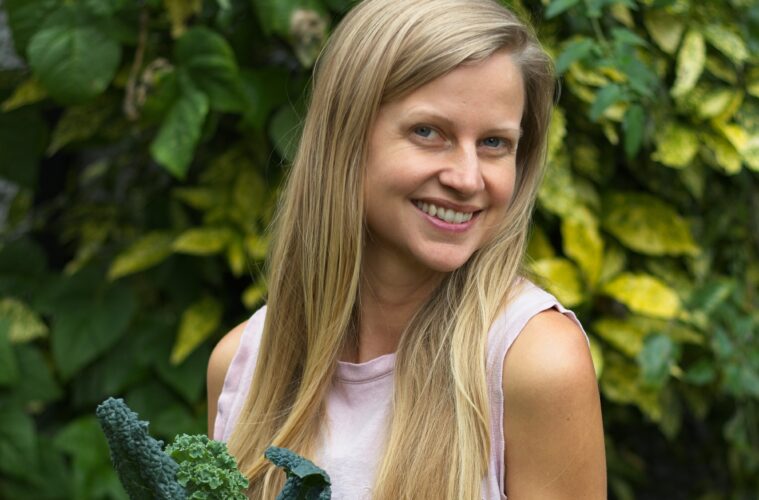Learn all about Anna and her latest release, The Vegan Family Cookbook!

Today, HOLR is sitting down to chat with Anna Pippus, who is most well-known for her casual, creative, and realistic approach to healthy and flavourful vegan cooking. As a lifelong food lover, she has been named one of Canada’s most influential vegans. She is also the voice behind Easy Animal-Free, a popular multi-platform project dedicated to helping people eat more plants.
Keep reading to learn all about Anna and her latest release- launching today!- The Vegan Family Cookbook.
Tell us about your latest release, The Vegan Family Cookbook, launching at the end of this month.
The Vegan Family Cookbook is the guidebook I wish I’d had when I was trying to transition from burrito-ordering student to Kitchen Manager of my family, figuring out how to plan for and cook three nutritious, crowd-pleasing meals a day without becoming totally burnt out. Once I’d hacked the family kitchen, I set out to share what I’d learned. This book contains real recipes that my family regularly eats, and because I’m a busy mom and working professional, you know they have short ingredient lists and streamlined preparation processes. But more than that, because cooking only from recipes can be restrictive and tiring, the book contains everything I know about how to cook without recipes, too: how to make a soup, salads, and bowls on the fly, secrets to making vegan food taste delicious, and tips for packing lunches. Mostly, with my approach to cooking by theme, I hope the book helps you answer the dreaded, blood-curdling daily question, What the heck should I make for dinner?!
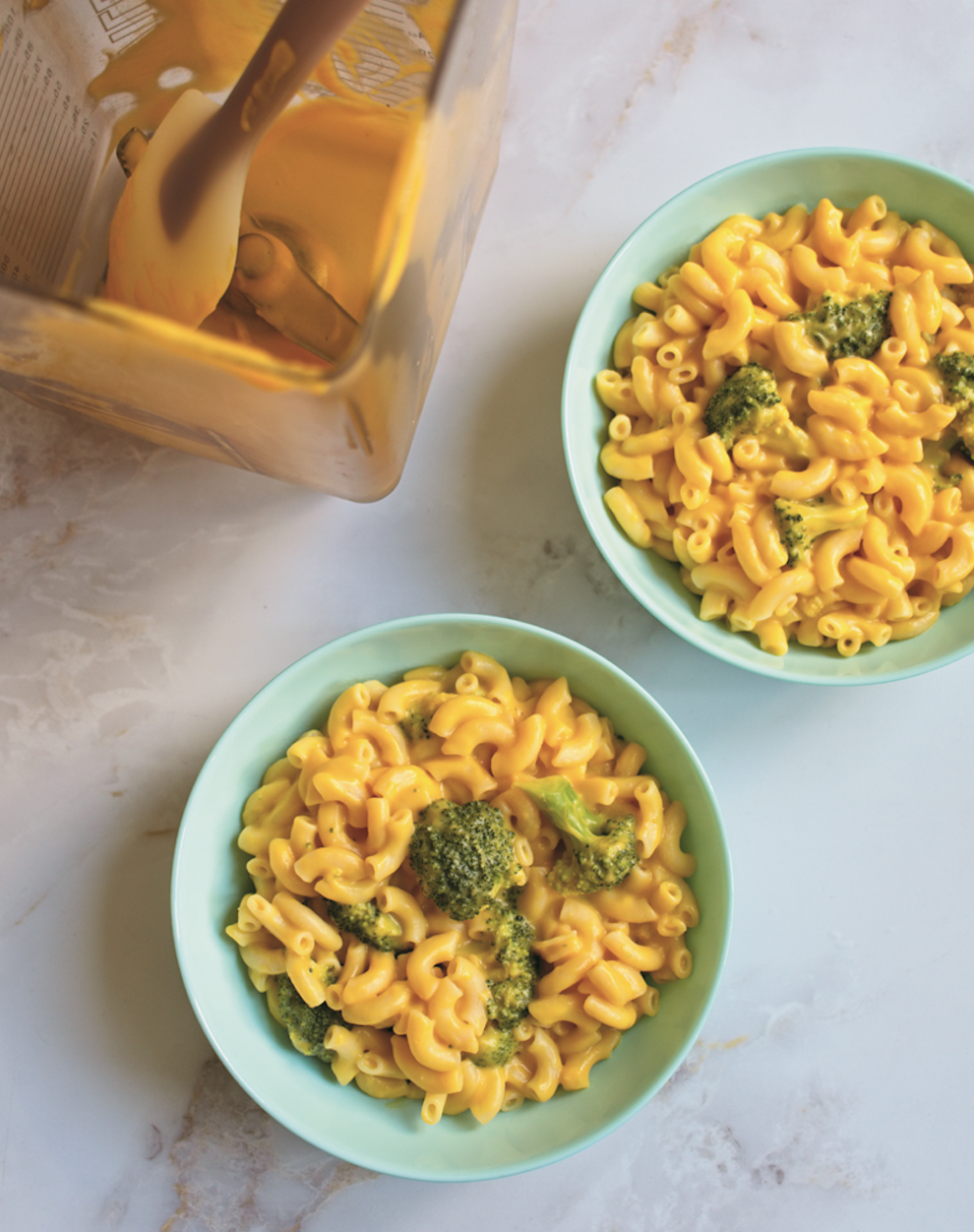
Image Credit: Anna Pippus
Can you share some of your trade secrets for taking a vegan approach to popular dishes and weeknight favourites?
Veganizing familiar favourites is an easy entry point into plant-based eating. Cashew cream (cashews blended with water) makes a perfect dairy swap for curries, soups, pasta, and sauces. Brown or green lentils, maybe along with some ground walnuts, are a delicious and savoury alternative to ground meat. Tofu stands in for chicken—although, like chicken, tofu doesn’t bring much flavour on its own so needs to be seasoned, marinated, or browned (don’t overthink it; even a little olive oil, salt, and pepper counts as seasoning). The vegan answer to meat and potatoes is bowls—that easy formula you can always fall back on when your mind is blank at mealtime. A bowl can contain a grain or starch, legumes, a veggie or three, sauce, and toppings. For example, rice and Mexican-inspired black beans with lime-dressed salad, guacamole, and pepitas; potatoes with roasted chickpeas and cauliflower, tahini sauce, and fresh parsley; or polenta with lemon-garlic cannellini beans and a tomato-cucumber salad. I have an entire chapter in The Vegan Family Cookbook devoted to demystifying bowls with plenty of building-block recipes and combination suggestions.
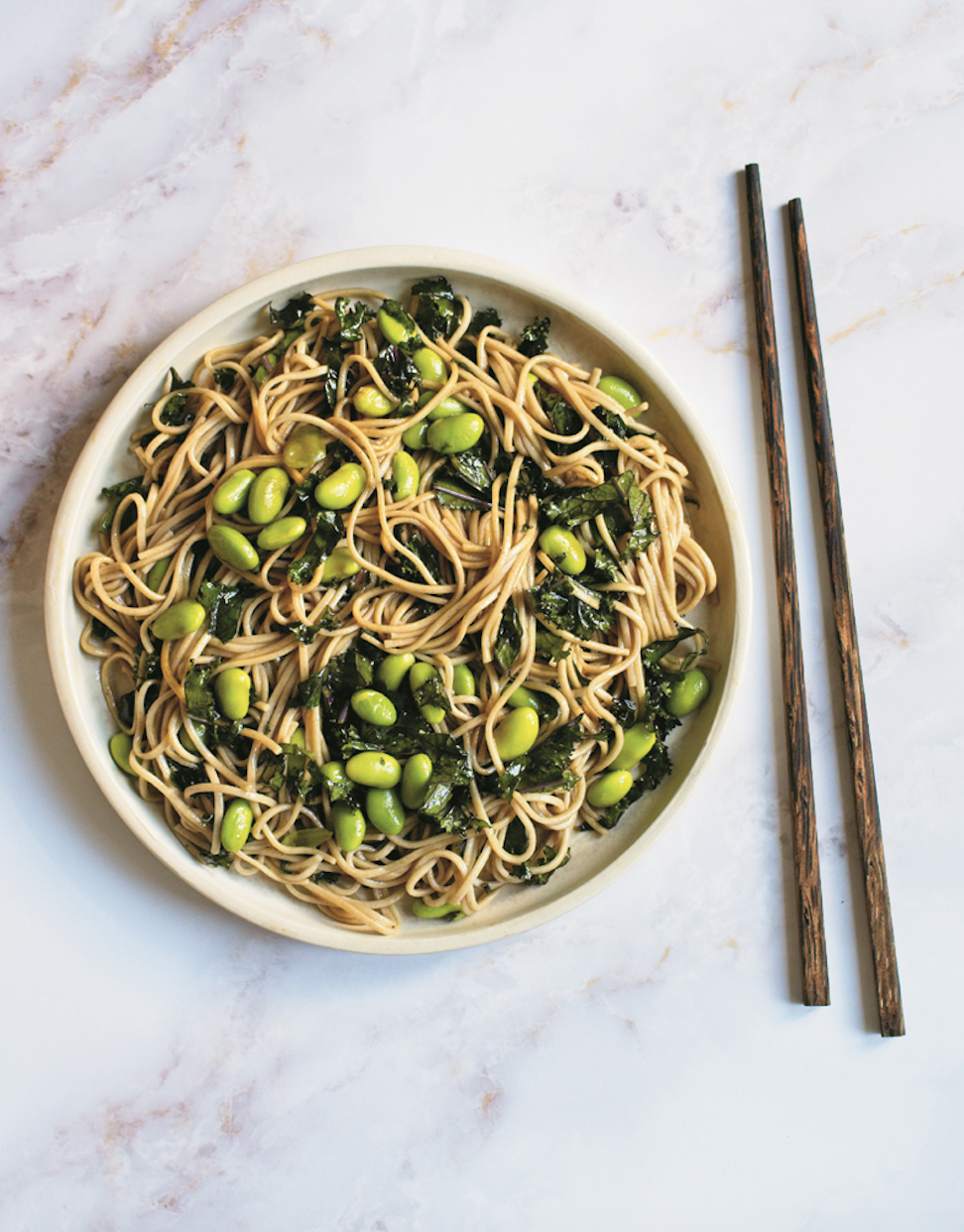
Image Credit: Anna Pippus
What are some of the top foundational cooking building blocks to becoming a resourceful cook?
Above all, becoming a resourceful cook requires a mindset shift, from relying on recipes and food “experts,” to feeling empowered to experiment in the kitchen, to taste food as you go, and to decide for yourself when something tastes good. Think of recipes as guidelines from which you can add or delete to suit your preferences and what you have on hand.
Of course, there are a few things to know to help make food taste delicious, and that’s especially true with vegan cooking. Bear with me while it gets a little nerdy here. One, meat and dairy naturally contain fat and umami (savoury) flavour compounds while beans, lentils, and tofu do not. So, you need to add these elements to your meals. Use healthy fats like nuts, seeds, extra virgin olive oil, coconut milk, tahini, and so on to add mouthfeel and satiety to plant-based meals. And include umami-rich foods like mushrooms, tomatoes, soy sauce, and walnuts, or utilize umami-producing cooking techniques like fermenting and browning, to make plant-based meals delicious and satisfying. Two, don’t neglect the importance of texture. Meat provides something we can sink our teeth into, while a bowl of beans, even deliciously seasoned, are simply soft. So when cooking plant-based, it helps to consider textural contrast: think crusty bread, crisp salad, crunchy nuts and seeds, and chewy noodles or tortillas. I have lots more tips and tricks for vegan cooking in The Vegan Family Cookbook.
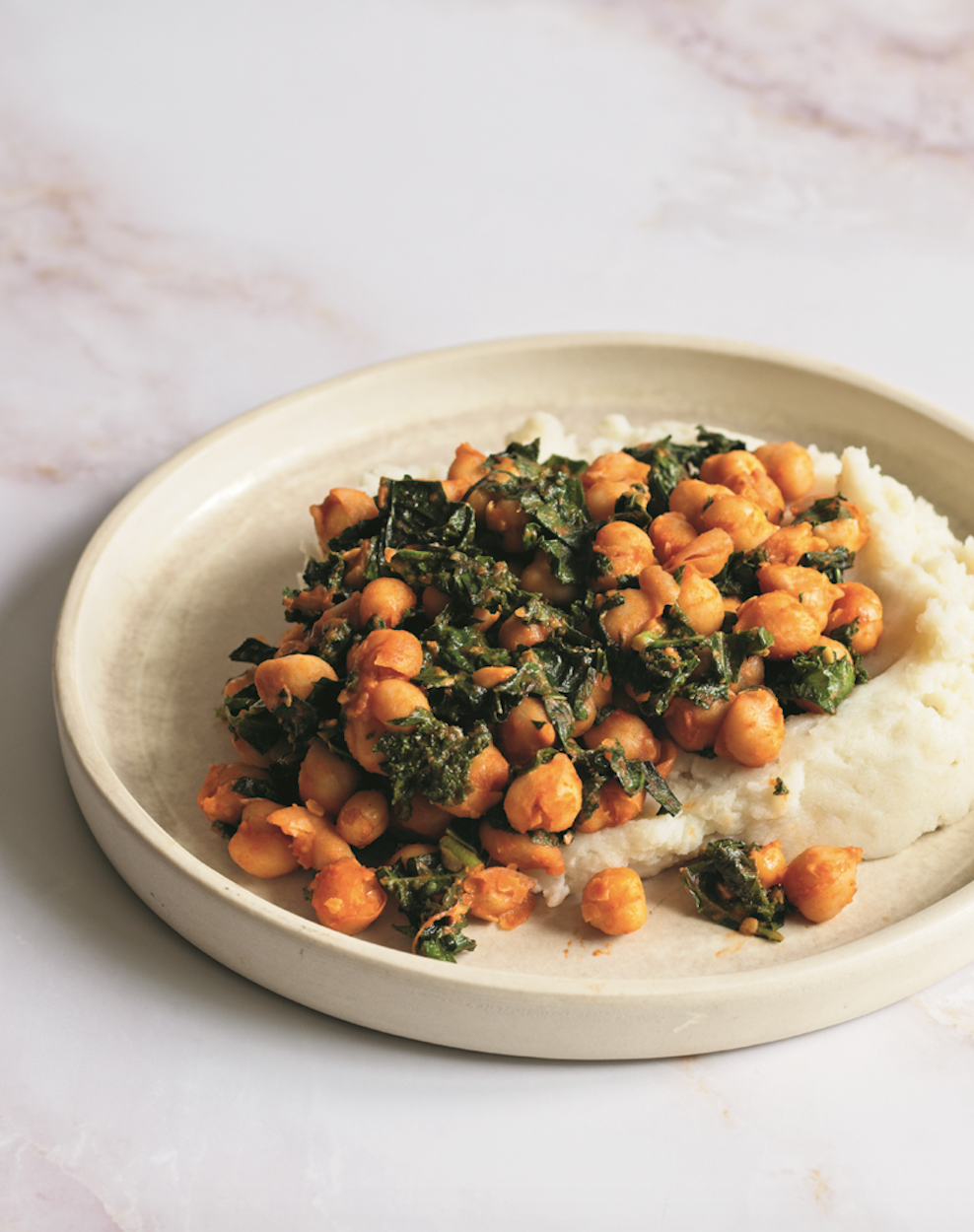
Image Credit: Anna Pippus
What are some of your favourite recipes from The Vegan Family Cookbook?
I am not exaggerating when I say I’ve made the Oat Waffles hundreds of times—they’re an absolute staple in my house, being nutritious, filling, inexpensive, and easy. On weekends, we love to make the hearty and savoury Brunch Hash, which I’ve been known to tuck into a corn tortilla with avocado and hot sauce. Like nearly everyone on the planet, we love pasta, and I have a ton of ways to mix it up so it doesn’t get old: Lemon-Garlic Skillet Pasta with Cannellini Beans, Mac and Cheesy with Broccoli, and Lighter Kale Pesto Pasta are a few faves (but asking me to pick a favourite pasta dish is like asking me to pick a favourite child). Bowls are a vegan secret weapon in the fight against mealtime fatigue because there are infinite ways to make them and they’re so easy once you get the hang of it. Even on *one of those days*, I always seem to be able to muster the energy to make the Five-Minute Paprika-Spiked Chickpeas and Greens or the Sheet Pan Chickpeas and Cauliflower to build a bowl around. For my fellow tofu lovers, my life is better because Garlic-Soy Tofu with Mushrooms and Napa Cabbage, and Miso Ramen, are in it.
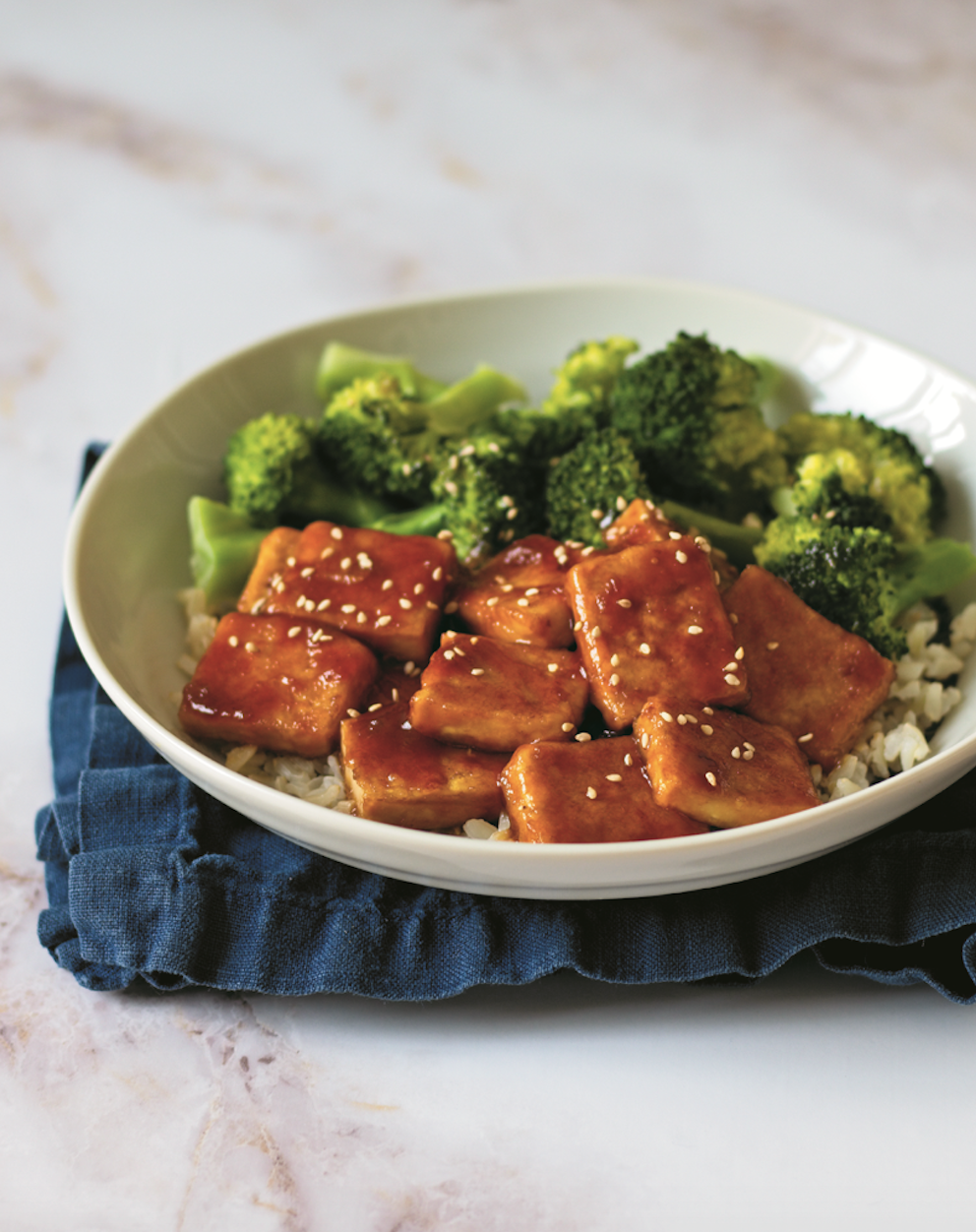
Image Credit: Anna Pippus
Can you talk to us about veganism and its impact on the environment?
When we farm animals, they need to be fed, watered, housed, and transported during their lives, which can be weeks to months long. Consider all the food—all the calories—it takes to keep these animals alive; most of that feed is essentially wasted because it is metabolized by the animals only to keep them alive, not converted to usable calories. Now consider if, instead of growing so many livestock feed crops, we used that arable land for growing environmentally friendly crops like lentils, beans, and oats to eat directly ourselves. You don’t need to be an environmental scientist to see that eating lower on the food chain has a dramatically lower impact on the planet. And in fact, researchers have found that cutting meat and dairy from our diets can reduce our carbon footprint from food by up to 73 percent. Because animal agriculture is so resource-intensive, it disproportionately contributes to land use and degradation, water use and pollution, species extinction, and of course, climate change.
Be sure to check out The Vegan Family Cookbook on Amazon.ca and Indigo.ca today!
Published by HOLR Magazine.


